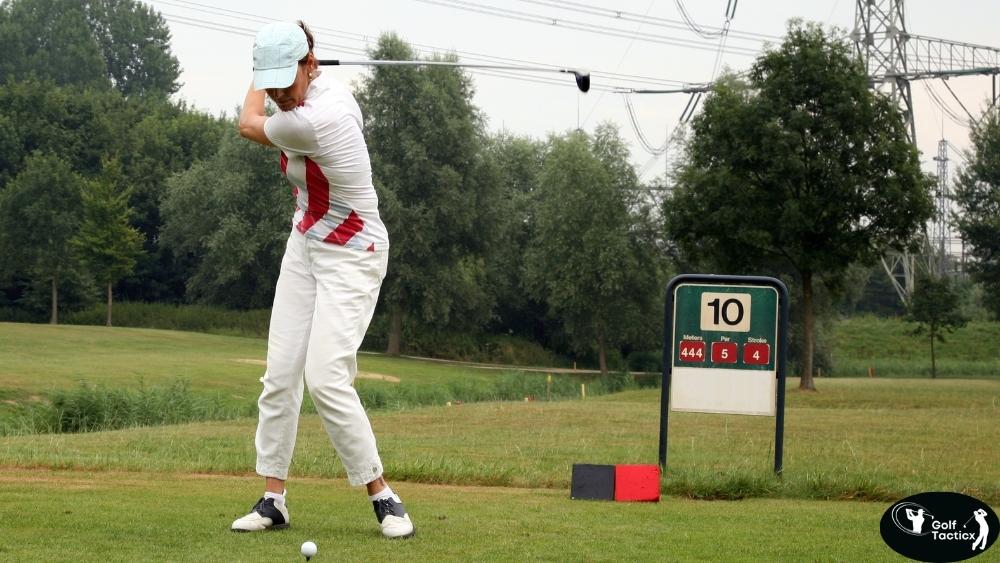In our previous posts, we’ve discussed how to develop an effective practice routine, enhance your driving range sessions, and track and analyze your golf statistics. Now, let’s focus on identifying your biggest weaknesses on the course. Understanding where you struggle the most will allow you to tailor your practice sessions effectively and improve your overall performance.
Every golfer wants to get better, but improvement starts with Identifying Biggest Weaknesses on the Golf Course. Whether you’re a beginner or have played for years, small mistakes can lead to big scores. By Identifying Biggest Weaknesses on the Golf Course, you’ll know what to fix and where to focus your practice. In this post, I’ll help you spot the most common issues and show you simple ways to improve your game fast.
Why Identifying Weaknesses Is Crucial
Recognizing your weaknesses is the first step toward improvement. By pinpointing areas where you consistently underperform, you can develop targeted practice strategies to address these issues. This focused approach leads to more efficient practice sessions and faster improvement.
Common Areas Where Beginners Struggle
As a beginner, you might find challenges in the following areas:
Driving Accuracy: Consistently hitting fairways off the tee can be difficult.
Approach Shots: Landing the ball on the green in regulation may be challenging.
Short Game: Chipping and pitching around the greens can be inconsistent.
Putting: Reading greens and making putts can be a struggle.
Identifying which of these areas you find most challenging is the first step toward improvement.
Methods to Identify Your Weaknesses
Identifying your weaknesses in golf is crucial for improving your game. It allows you to focus your practice on the areas that need the most attention. Here are some effective methods to help you identify your weaknesses:
Track Your Performance: Keep a record of your rounds. Note your score, the number of fairways hit, greens in regulation, and putts per round. Over time, you will notice patterns in your performance. For example, if you consistently miss greens or struggle with putting, those could be areas that need work.
Use a Swing Analyzer: A swing analyzer tool can provide detailed feedback on your swing mechanics. It can track your swing speed, tempo, and ball flight path, helping you pinpoint flaws in your technique.
Video Analysis: Recording your swing and comparing it with professional golfers can reveal weaknesses in your posture, grip, or swing plane. Watching your swing from different angles helps you see what’s wrong that you might not feel during the shot.
Consult a Golf Coach: A golf instructor can assess your game and provide expert advice. They can observe your swing and other aspects of your game, offering personalized drills to address weaknesses.
Self-Reflection: Pay attention to areas where you consistently lose strokes, whether it’s off the tee, with your irons, or around the greens. Being honest about what’s holding you back is key to improvement.
Record and Review Your Rounds
Use a smartphone or camera to record your rounds. Reviewing footage can help you notice swing flaws, poor course management decisions, or other areas needing improvement.
Identifying Biggest Weaknesses on the Golf Course takes time, patience, and a clear mind. Using tools like a rangefinder, launch monitor, or swing trainer, you can gather helpful data. The more you know about your game, the better you can target practice and develop a strategy for long-term success.
Analyze Your Scorecard
After each round, review your scorecard to identify patterns. Look for:
Holes where you consistently score higher
Common mistakes made during the round
This analysis can highlight specific areas to focus on during practice.
Practical Example
Let’s say you consistently score higher on par 3 holes. This could indicate issues with your iron play or course management. To address this:
Practice Iron Shots: Dedicate practice sessions to hitting irons from various distances to improve accuracy.
Course Management: Work on strategies for playing par 3s, such as club selection and shot planning.
By focusing on these areas, you can improve your performance on par 3 holes.
Conclusion
In the end, Identifying Biggest Weaknesses on the Golf Course is the first step to playing better. When you know what’s holding you back, you can work on it and improve faster. Whether it’s your swing, putting, or course strategy, small changes can lead to big results. Keep paying attention and keep learning.
The more time you spend Identifying Biggest Weaknesses on the Golf Course, the more confident and skilled you’ll become each time you play.
In the next post, we’ll explore effective techniques to simulate on-course pressure during practice to enhance your performance under pressure.
















Leave a Reply